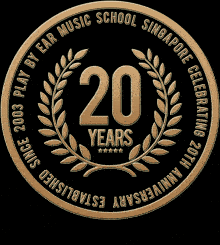a)Time signatures which are multiples of ONLY 2 (eg 2/4, 4/8)
b)Time signatures which are multiples of ONLY 3 (eg 3/4, 6/8)
The above examples are based on a 4/4 time signature. From each black dot to another, connected or unconnected, is a swing on the right hand. The trick is to always swing the hand though we’re not hitting any strings, to maintain rhythm and tempo, as the hand will act as a metronome.
By carrying out this motion, having some up strokes and some down, too will add a sense of naturality, as at times we start from the bottom strings, at times the top.
We will be letting our minds understand that each stroke, whether up or down, has a specific count and needn’t guess (as on unfamiliar grounds guessing would bring about error).
Enough said, let’s try the sequences on the following page, not moving on till each is familiarized.

